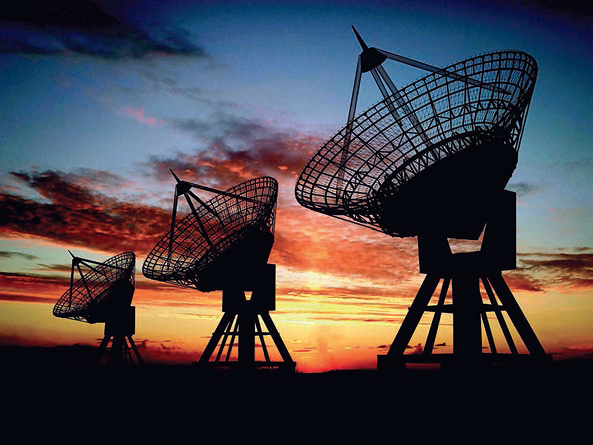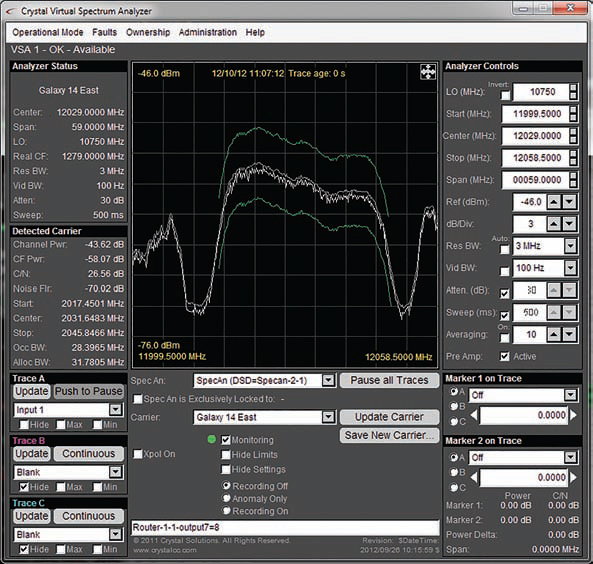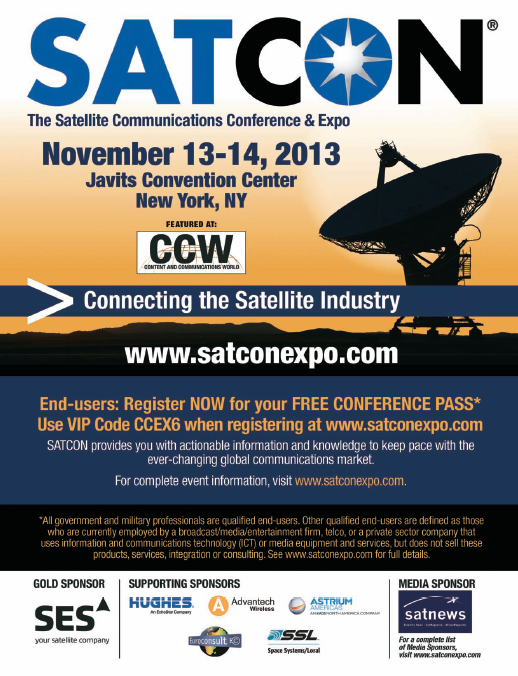Satellite interference, as most readers are already aware, is a big—indeed, growing—problem in our industry. Interference affects the entire industry, from manufacturers to satellite operators, and, naturally, the end user. Monitoring has been proven to be an effective weapon in detecting and mitigating interference. However, the challenge for a great many users is how do you monitor for interference while on a restrictive budget.

Monitoring To Stop Interference
There are a number of tools and initiatives being implemented to help mitigate satellite interference. Monitoring and control (M+C) is one of those and this technology is extremely effective. A large percentage of instances of interference are, in fact, caused by human error. The more we automate error checking, the less potential for errors. M+C systems can stop a carrier or send alerts if something is not setup correctly—the better the system, the less training needed for the operatives.
Tier 2 Monitoring
There are different levels of monitoring and, in an ideal world, every single user across the globe should be monitoring for interference 24 hours a day, 7 days a week. There are some great Tier 2 monitoring tools available, some of which are supplied by Crystal. Such tools enable a whole host of great functionality, allowing the user to monitor and to deal with any issues that have been discovered. For some of these tools, too often the complexity is such that the user really needs a trained staff operating the M+C, which can throw another spanner into the works.
For the larger broadcasters, that’s terrific—it makes absolute sense to have those level of tools in place to deal with complex interference issues, immediately in-house. These higher level tools work for the larger broadcasters, as they generally have the time, money, and resources to install Tier 2 monitoring systems and can have someone expertly trained and then watching for interference anytime of the day or night.
The Smaller Guys
The situation is quite different for the smaller users. However, similar to their larger counterparts, they also want to solve interference as it affects them just as negatively. The problem is that without a monitoring tool, how would anyone know interference has struck the operation? Is it simply to await calls from disgruntled customers, or be unceremoniously switched off by the satellite operator? In fact, how many instances of interference may actually be occurring without notice?
The latter dilemma is exactly why the Crystal Solutions Spectrum Monitoring and Recording (SMR) Tier 1 monitoring product was developed. The product is essentially a monitoring solution on a smaller scale, inexpensive enough for most users to run it 24/7. SMR Tier 1 offers a number of high-end features, such as a spectrum analyzer and the ability to set alarms, as well as the ability to record and export moving traces. The product can also be used for multiple carriers—there is no need to purchase multiple systems.

Resolving Issues
With Tier 1 monitoring, the user will be alerted when there is an issue—however, resolution may require a call for external help. Such help may be in the form of one more high-end carrier monitoring system, which can be wheeled in to a given carrier to resolve issues as and only when needed. For many, this will be a solid workaround, when Tier 2 monitoring just isn’t an option. In those cases, the issue would need to be escalated to the satellite operator.
As mentioned previously, satellite interference is an industry-wide issue. Most of the major and many smaller satellite operators are working together to combat satellite interference. They have systems and initiatives in place to mitigate and eventually prevent interference and are always willing to work with conscientious users to resolve it. They are also working on better and more efficient ways of reporting interference to help them reduce the time affected.
The Way Forward
There are a number of practical initiatives to combat interference. None of these initiatives can work by themselves—that requires a combination of tools. M+C is extremely effective and, if all systems were controlled, it would arguably remove a major portion of interference that is currently caused by human error.
High end monitoring systems have their place. For the smaller user, a light, inexpensive, Tier 1 monitoring system will dramatically reduce the impact of interference, and that will ultimately save time and money. If we all work together as an industry, who knows, perhaps we can eventually even eliminate interference once and for all.

About the author
Roger Franklin is the President + Chief Executive Officer of Crystal Solutions. He began working for Crystal Solutions at 15 years of age. By age 17 he had exhausted the mathematics offerings of high school and, before completing his senior year, enrolled at Oglethorpe University. Transferring to the Georgia Institute of Technology, he graduated in only three years. Roger has remained with Crystal Solutions and holds a number of positions with increasing responsibilities. He gained experience in all facets of the business, with particular emphasis on product development. Roger acquired the business in 2007.


